Genericide: The Kryptonite of a successful brand
How Marvel and DC lost their US trade marks for "superhero".
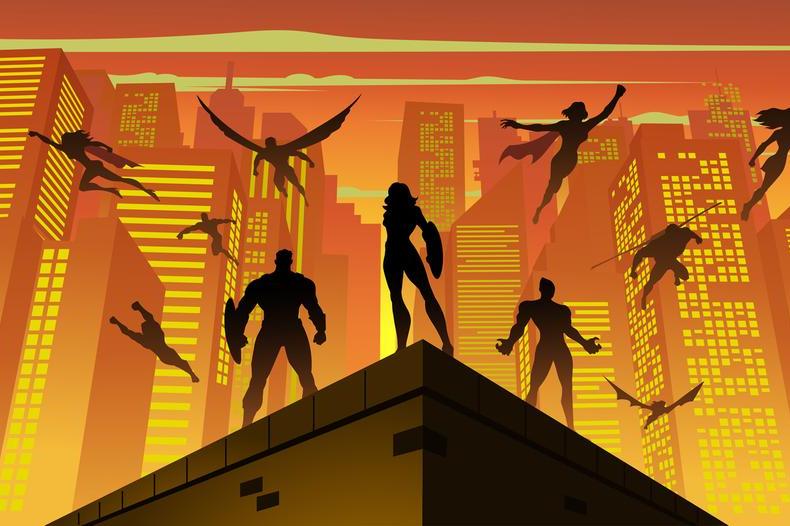
Before the famous brand battles between Coca-Cola and Pepsi and Apple and Samsung, the world witnessed an even fiercer rivalry between the comic book publishing companies Marvel and DC.
An unexpected crossover
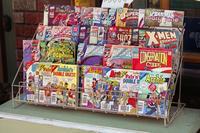
Each with its own particular brand of super hero the two have competed head on for nearly 100 years, with Superman, Batman and Wonder Woman in DC’s corner, lining up against Captain America, Spiderman and The Hulk turning out for Marvel.
But in a twist worthy of their own fantasy universes, both camps have now lost their super hero status. The US Patent and Trade Mark Office has cancelled their joint trade mark registrations for various “super hero” marks in the US, on the grounds that the term has become generic and can no longer function as a brand name.
While DC and Marvel have occasionally flirted with cross-overs between their respective fantasy worlds, you might be surprised to learn that in the world of trade marks they have been in a cosy collab since the 1970s. Due to a rather unusual set of circumstances the two rivals jointly acquired the US trade marks SUPER HERO and WORLD’S GREATEST SUPER HEROES from two other parties who were fighting over them in court. They decided to settle their differences by jointly assigning the marks over to Marvel and DC.
It’s very unusual for rivals to jointly own a brand name, but from a commercial perspective this made sense as the alliance gave Marvel and DC a joint monopoly over the term “super hero”. Such beings only existed in the worlds created by the two comic book giants, and the more the term became synonymous with the genre the more it gave them both a competitive advantage.
There have since been many rival movies and TV shows featuring their own versions of super-abled characters, such as Amazon’s The Boys, Disney’s The Incredibles, or DreamWork’s Megamind (which has its own in-joke about the baddie’s weak name being chosen because it was the only one not trade marked). However, despite the characters in these works looking very much like “super heroes”, they were never directly referred to as such. Use of that term would be trade mark infringement.
But in September the United States Patent and Trademark Office (USPTO) cancelled four of Marvel and DC’s joint trade mark registrations for various “super hero” marks after they were challenged by independent comic book company, Superbabies Limited, which argued that the term is now generic.
Gotham City cannot be governed
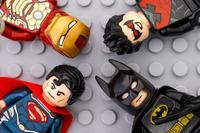
What is it that turns a trade mark into a generic term, or what is known in the trade mark world as “genericide”? A trade mark is a designator of origin, which means it indicates where goods or services come from. However, if everyone starts using the trade mark to refer to a particular type of goods or services then it can no longer be a functioning designator of origin.
This happens when a brand becomes very well known, and the owner does not do enough to prevent it becoming a generic term. Initially a brand can become so well known for its goods or services that it becomes a household name. So far so good. The growth of the brand continues, until that same brand, for which there is a trade mark registration, is the first or only thing that comes into a consumer’s mind when thinking of a particular product or service. Still pretty good. However, at that stage the brand owner must take action to prevent the brand from tipping over the edge and becoming generic.
They can do this by taking legal action against any trade mark infringers, and by taking steps to educate the public that the mark is still their brand. This can be done in clever advertising and marketing, and by educating journalists so they don’t repeat the mistake.
In the famous example of the brand name HOOVER for vacuum cleaners, so much work has been done that we all know it’s still a brand despite its widespread use as a descriptive term (the UK trade mark rights are still valid and date back over 102 years).
However, there are also some famous brands that have already fallen victim to genericide:
TRAMPOLINE
The “rebound tumbler”, more commonly known as the trampoline, was first invented in 1934. TRAMPOLINE was a registered trade mark owned by Griswold-Nissen Trampoline & Tumbling Company but over the years, the mark became generic until it eventually lost its registered status. Currently, anyone can sell a trampoline and most companies sell their own brand trampolines.
ESCALATOR
The term ESCALATOR was also a registered trade mark owned by Otis Elevator Co. for its moving staircase invention. As the invention became more and more popular, the public began to refer to all moving staircases as escalators, even those that were manufactured by other companies. The registration was challenged by a third party and the USPTO declared the mark to be generic as a result of Otis not adequately policing the mark from becoming a common descriptive term.
The TRAMPOLINE and ESCALATOR cases are clear examples of why companies need to protect their trade marks by not only registering them but also policing them to ensure that they are not misused in a way that could lead to them being genericized. It is very difficult to control consumer behaviours and how the public choose to familiarize themselves with brands but actively policing the use of their trade marks registrations would allow companies to have some command over the issue, at least from a legal perspective.
Two famous examples of well-known brands which are still registered, despite seemingly becoming generic, are:
BAND-AID
In the UK, we refer to first-aid adhesive plasters simply as plasters but in the US, they are more commonly referred to as band aids. However, BAND-AID is still a registered trade mark, owned by Kenvue Inc., consumer healthcare company of Johnson & Johnson.
JET SKI
Most people are familiar with the term jet ski. However, very few know that JET SKI is a registered trade mark owned by Japanese motor company Kawasaki Motors Ltd for their brand of personal watercrafts (PWCs). Companies such as Bombardier and Yamaha also manufacture PWCs under the brands WAVE RUNNER and SEA DOO respectively, but none of these terms are used in the same way as JET SKI.
This is a particularly interesting situation as many people will know what a jet ski is but may not necessarily know what a personal watercraft might be. Surprisingly, JET SKI is still a registered trade mark in the US and the UK.
The empire did not strike back
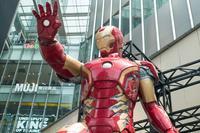
Returning to Marvel and DC – how exactly did their registrations get cancelled? It all started with independent comic book company Superbabies Limited, which published comics featuring a team of super-abled babies called the Super Babies. Superbabies Limited applied for a number of US trade mark registrations for SUPER BABIES, and according to the writer of the Super Babies comics, DC accused Superbabies Limited of infringing the jointly owned SUPER HERO marks and threatened to bring legal action against them.
In the past, Marvel and DC have enforced their jointly owned SUPER HERO marks many times by using them as a basis to oppose a number of US trade mark applications for similar marks. However in this case, Superbabies Limited decided to challenge the giants and applied to cancel Marvel and DC’s marks on the grounds that they cannot claim ownership over an entire genre.
But is “super hero” really an entire genre in itself? Over the years, Marvel and DC have referred to all of their characters as “superheroes”, creating the impression that any super-abled being who uses their powers for good can be classed as a superhero. However, they haven’t taken enough active steps to show that “superhero” belongs only to them.
Perhaps it’s the sheer number of Marvel and DC superheroes that led to the term being analogous to super-abled beings, but they should have been aware that while they own the registered trade mark, they do not have a monopoly over characters in the form of super-abled beings. To add to this, both companies have had their own different versions of teams of heroes – Marvel’s Avengers and DC’s Justice League, further creating the impression that superhero is just a general label.
There are numerous comic books, movies and television shows featuring super-abled beings and publishing houses and media companies have had to come up with creative ways to refer to them, but crucially the public always referred to them as superheroes.
Marvel and DC simply did not respond to the challenge by Superbabies Limited, which resulted in the cancellation of four SUPER HERO trade marks, the oldest of which was registered back in 1967. It is not known why Marvel and DC failed to response, but perhaps they saw the writing on the wall. However, they still jointly own a US registration for “SUPER HEROES” which was not part of the cancellation action brought by Superbabies Limited, so they have not lost everything.
Marvel and DC have previously relied on the now cancelled marks to prevent similar marks from being registered on the US trade mark register, so it’s certainly strange that they didn’t even try to maintain them. It also begs the question of what would happen to Marvel and DC’s jointly owned trade mark registration for SUPER-VILLAIN.
Where there are superheroes, there are super villains – and since the companies have been using this mark in the same way as their SUPER HERO marks, does this mean that SUPER-VILLAIN could also be cancelled? That will remain unanswered until someone is brave enough to bring another cancellation action against Marvel and DC.
With great power comes great responsibility
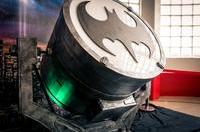
The bigger a brand gets, the closer it comes to potential genericide, but below are a few ways that businesses can try to prevent it.
Firstly, a trade mark should always be used as a trade mark. One way of doing this is to use the trade mark together with the generic word. This can be strengthened even further by using the registered trade mark symbol next to the trade mark to differentiate between the two, for example: LEGO® blocks.
Businesses could also think about bringing in new products and using the trade mark across all of them as outlined above, for example: Vaseline® petroleum jelly, Vaseline® body lotion and Vaseline® hand cream. If the trade mark is used for more than one product, it would be harder for the public to use the trade mark to refer to a single general item.
If businesses are considering licensing their registered trade marks, then they should ensure that their licensees are also required to make proper trade mark use of the mark in line with the business’ brand guidelines. Such requirements should be drafted into licence agreements and monitored by the licensor.
Finally, if any generic or incorrect use is spotted, then businesses should take action against any third parties doing this and also educate the public of their registered trade mark and the proper way to use it.


